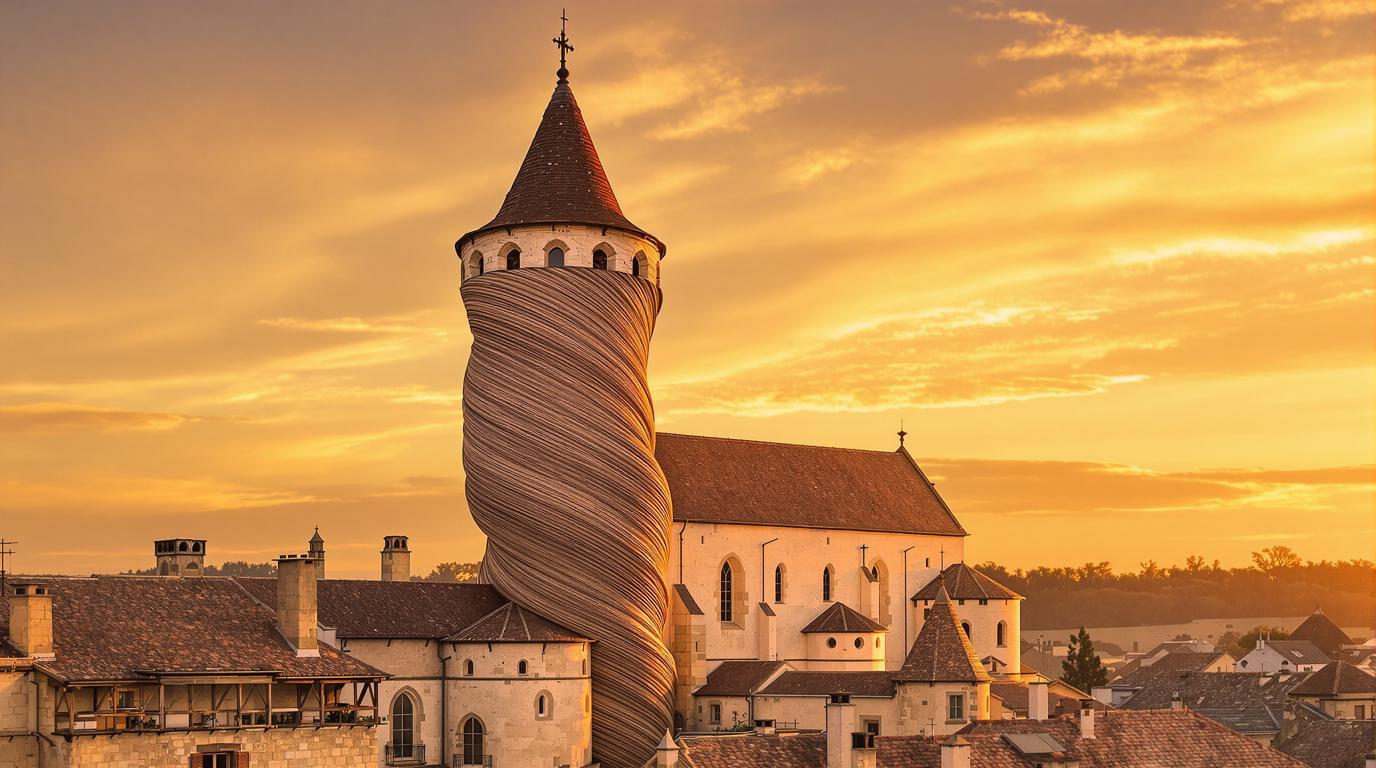In the heart of rural France, where pilgrims have walked for centuries, lies a village where time seems to bend – quite literally. St-Côme-d’Olt’s twisted church spire spirals toward the heavens like a medieval optical illusion, bewildering visitors since the 16th century. This enchanting village, honored as one of the “Most Beautiful Villages of France,” remains curiously absent from most travelers’ French itineraries.
A church tower that defies gravity
The village’s most photographed feature is undoubtedly the twisted spire atop the Church of St. Cosmas. This architectural anomaly wasn’t planned – it’s the result of green chestnut wood beams that warped as they dried over centuries. Yet locals embraced the imperfection, with some claiming it symbolizes Christ’s twisted crown of thorns.
“When pilgrims first glimpse our twisted tower, they know they’ve found something special – both the physical and spiritual path bends in unexpected ways here,” shares Marie Laurent, whose family has hosted St. James Way walkers for generations.
Where ancient pilgrims still tread
St-Côme-d’Olt sits along the historic Chemin de Saint-Jacques de Compostelle (Way of St. James), a UNESCO World Heritage pilgrimage route. Each year, thousands follow ancient footsteps through the village, creating a unique atmosphere where medieval traditions blend with modern exploration. The dedicated Compostel’Bus connects pilgrims to significant stops along the route, making this hidden gem surprisingly accessible.
A culinary secret rivals France’s finest
The Aveyron region harbors some of France’s most underrated culinary traditions. In St-Côme-d’Olt, don’t miss sampling aligot – a heavenly mixture of mashed potatoes, melted cheese, cream, and garlic that stretches dramatically from spoon to plate. This hearty shepherd’s dish pairs perfectly with the robust red wines from nearby vineyards that rival even Bordeaux’s famous labels.
Nature’s geological masterpiece
Just beyond the village’s medieval walls lies Clapas de Thubiès, a dramatic basaltic scree slope formed by ancient volcanic activity. These hexagonal rock formations create an otherworldly landscape reminiscent of Europe’s own mini Grand Canyon – perfect for photographers seeking dramatic landscapes without the tourist crowds.
Where to stay for authentic immersion
Budget travelers can camp riverside for around €17 nightly, while those seeking more comfort should book at family-run chambres d’hôtes (bed and breakfasts) where hosts often share stories of village life over homemade aperitifs. May through September offers ideal weather, though visiting in late May provides the bonus of witnessing the Transhumance cattle migration celebrations.
Beyond the village: day trips worth taking
St-Côme-d’Olt makes an excellent base for exploring the broader region. Consider visiting the iconic wine museum shaped like a decanter or venturing further to discover pristine beaches that rival those of untouched Caribbean islands.
“Our village is small, but it contains centuries of stories,” explains local historian Jean Dupont. “Each stone building has witnessed pilgrims seeking meaning, from medieval times to today’s soul-searchers with smartphones.”
The hidden soul of authentic France
While tourists flock to Paris and Provence, St-Côme-d’Olt represents quintessential rural France – where church bells still mark the hours, local bakers know customers by name, and evenings are spent watching the sunset paint golden hues across limestone facades. Here, travelers find what many seek but few discover: a place where authenticity hasn’t been compromised by tourism.
Unlike Switzerland’s famous chocolate-inspiring peaks, St-Côme-d’Olt doesn’t boast dramatic Alpine heights – its magic lies in subtle charms that reveal themselves slowly. In an age of Instagram-famous destinations, this twisted-spire village reminds us that some of travel’s greatest rewards come from places where authenticity speaks louder than fame.
